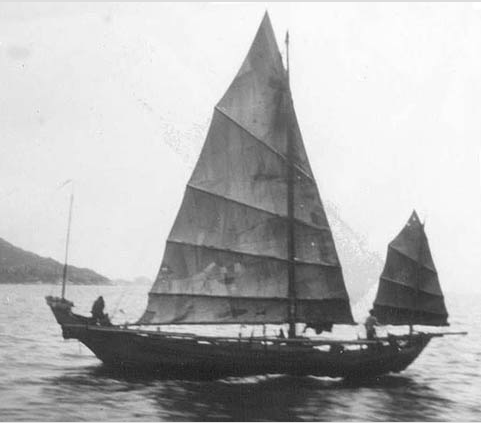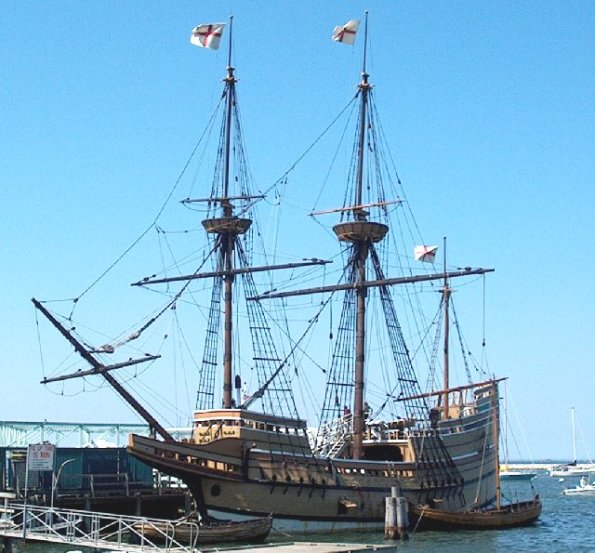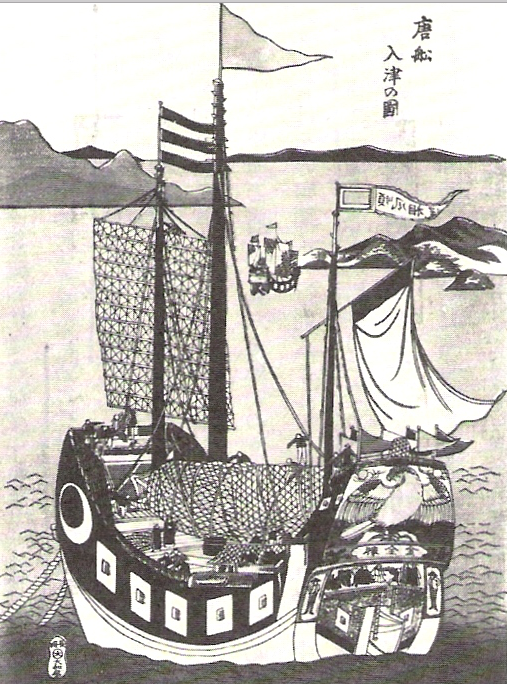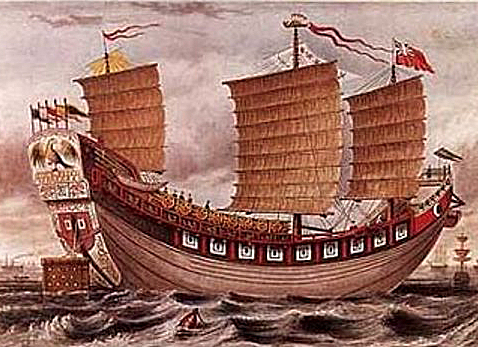Counter-colonial Heistcrawl Rules v 0.1
To people waiting for TikinD part 2, sorry, you’ll have to wait a bit longer.
To people who’ve been waiting for CCH for like a decade, well…. this is very far from complete but it’s the best way I know to share the current state and crowdsource feedback on it. I would like to start running CCH in the fall this year (hahahaha), so this is trying to get that moving. If you’d like to play over hangouts, please comment here or on G+
The basic concept: it’s 1610. You are ordinary inhabitants of a more-or-less historical Southeast Asian archipelago that looks and smells a lot like the Spice Islands.

The Portuguese have been around for a century and everyone hates them, but they’re more or less stalled. Now the Dutch have shown up and they’re like the Portuguese on steroids. They’ve already attacked 2 islands and demanded tribute, so what are you going to do?
The obvious answer is: UNITE THE PEOPLE! GET ALL FLASH GORDON ON IT AND THROW OUT MING. This might be that game. It’s not so easily done, though – there’s already the Portuguese and Spanish (ugh), there are English people sniffing around (smell like Dutch but pretend to be nicer?), there’s Chinese mafias and expansionist Mappilas from India and warring sultans and roving bands of slavers and the Japanese are acting weirdly secretive and expansionist at the same time. And there are even actual Ming loyalists (Chinese Ming, like the porcelain), who say they need to take China back from someone or other. And something’s got the old spirits all riled up.
Oh yeah, spirits.

They’re everywhere but it’s easy to think they don’t exist. The Dutch don’t seem to believe in them, although some people say they’re working for some big dark spirit. Sometimes you can catch them in contracts, or in jars, but that’s dangerous work. Think Princess Mononoke and Spirited Away and Yokai and… sure, Pokemon I guess.
Mechanically it’s some sword-waggling, piratical RPGing on a more-or-less DnD mould and some Civilisation-type domain gaming – if Civ were based on actor-network theory and not Toynbee/Gordon Childe technological determinism. When people join together to do actions they do them better, so even on the rowboat where you start, you should be thinking about yourselves as a unit, not a party of individuals.
Wait, what? Combining together
Essentially, you’re like slightly lower-powered Risus characters – you have 3d in your professional skill, 2d in a second skill and 1d in a hobby and you roll off against your opponent and the winner wins the round, and then they erode the enemy’s ability to resist by 1d, demonstrating to them that they have entered a death spiral and should make alternative plans. Fine.
BUT unlike Risus if a friend comes to help you, then together you can add 1d to the skill of whoever is taking the lead. If a total of 5 people band together then they can roll one roll at +2d. 10 people makes +3d, and so it goes, 20, 50, 100, 200 etc etc.
To usefully add to a skill, at least half the people combining must have at least 1d in it or something related. (I thought about going with strict doubling ie powers of 2 but I figured (a) people might be more familiar with the old coinage 1-2-5-10 scheme and (b) if anyone was really fussy about the numbers and power steps that might be a sign that this isn’t the game for them.)
Sure, there are some things this won’t work for (proverbially, making broth. More obviously, sneaking), but for building ships or castles, or for fighting, or for persuading local rulers/godlings of your sincerity, it works great.
And if you can add boats or cannons or pikes or walls to your efforts, then you can get bonus dice from that too (*full, flawless, intuitive system/schema TBD).
So, obviously, splitting apart
…is the key to the whole exercise. Add to your network, weaken the enemy’s. And that’s why it’s a heistcrawl: mostly you’re 2-5 randos out in the weeds trying to make trouble for the world’s greatest and most ruthless exponents of capitalism. So you fetch up outside a coastal fort full of wine-soaked Portuguese dons, bristling with cannons, and…

what? Frontal attack? Hardly. The trick might be to sneak in, poison the well (penalty to numbers, fighting ability), plant contradictory orders (dividing officers and forces), kidnap the priest’s girlfriend (sabotaging a morale specialist), wet the powder and spike the guns. Then gather all the drunks and ruffians you can find and charge the fort yelling as hard as you can, watch the Portuguese flail around, get cursed by their magic man, fail to fire anything and eventually run off into the jungle where you can pick them off 1 and 2d at a time.
Chargen
So it’s not quite Risus. You get 3 skills/tropes – one at 3d, one at 2d, one at 1d. They should be of the breadth of sailing, gunnery, melee, riding, shipbuilding, animalcraft, plantcraft, spirit sense – not as narrow as “sword” nor as broad as “thief.”
Also choose a profession. This is what you appeal to when you say “but I should be able to do this because I’m a _” and it gives you 1D or a default roll off your attributes when successfully invoked. Example professions include: pirate, smuggler, concubine, procurer, medium, monk, bodyguard/mafia hood, magistrate, spirit medium, cunning man, builder, fisherman, whaler, scout, merchant, legal opiner, scholar, “viking” slaver, diver, navigator
Also roll 6 DnD type stats, but only record the bonuses/penalties (+1 for 13-15, +2 for 16-17, +3 for 18). These are straight numeric mods (eg 3d for archer +1 for dex bonus) except if there’s a pure exercise of attribute (eg bend bars/lift gates for str), in which case you can roll it as dice like a skill. Wis is perception of spirits, Cha doubles as magic power.
Default status
is freeman/basic sailor/soldier/merchant’s agent/farmer.


If you’re secretly a ship captain/priest/village judge/longhouse master/princess that’s fine, write your story. But you start the game without the benefit of that higher status because you’re far from home and nobody cares.
Equipment
Also you don’t get a Risus-type thematically-appropriate comedy backpack of tools. Life is hard and people with a lot of loot tend to get stabbed in the Moluccas.
Level of Destitution (d6)
- shipwrecked. You have sodden clothing and personal effects up to earrings, hair ornaments. Also roll 1d6+8 on Table B. Save vs. INT or you’re also suffering from amnesia
2. where’d you get that? roll 1d6+14 on Table A and 1d12 on Table B
3. one good friend. You have the basic tool of your trade** plus roll d8 twice on Table A and 1d12 on Table B
4. practically minded. You have the basic tool of your trade** plus d12 twice on Table A and 1d6 on Table B
5. expert scavenger. You have a machete plus 3d20 on Table A
6. Temporarily distressed person of substance: roll 3d20 on table A, 2d12 on table B
** a kris or a marlinspike or a feely map or spirit-wrangling flywhisk or grapnel/multitool or glassware or whatever.
Table A
1. crowbar
2. dagger
3. shield
4. food, drink and backpack
5. lamp and flasks of oil (3)
6. melee weapon
7. armour: leather or improvised equivalent
8. bow or crossbow with 10 arrows/bolts
9. small raft (size 1)
10. mirror
11. rope (50′)
12. grappling hook/anchor
13. pouch with 20 silver dirhams
14. musical instrument
15. hammer, chisel, pick + 8 iron spikes
16. writing box and seal
17. arquebus + 10 shots
18. small barrel of gunpowder.
19. Barrel of arrack
20. 3 caskets grape shot, with powder
Table B
1. lucky medallion (re-roll 1 failed saving throw)
2. potion of healing
3. lockable iron-bound chest
4. guard animal (dog, lynx, monkey or similar)
5. riding or pack animal (camel, pony, goat)
6. size 2 boat
7. armor: scale or exotic
8. loyal family retainer ( a standard grog with a couple of charming quirks).
9. map
10. book – holy text or instruction manual
11. holy symbol or badge of office
12. spirit in a jar
13. slip of paper with a spirit contract – eat and then specify what you need
14. bird in a cage that repeats spirit chatter
Mustering-out Hooks
You may draw once or twice from the Barrel of Many Things
Things in the world that have something to do with you:
- a ship
- a fort, bay or haven
- a contact – smuggler, informant, fence, carpenter, smith, spirit go-between
- a weapon – cannon, bomb, spirit, blackmail, poison, disease
- a debt – blood, goods, mafia, spirit
- a diminished god from a foreign land
- a massive cache of gunpowder
- several gallons of the interloper’s “holy water”
- a sibling rival – kite pilot, long-distance swimmer, pirate, magistrate/king/official
- the washed-up corpse of something massive
- a spring that bubbles with blood or a cistern filled with teeth
- Hungry Grandmother’s bottle of secrets
- a funeral barge, surrounded by silence
- a Dark Child
- a commander of the invaders, disgustingly ill, on a mission
- one of the enemy’s ships, on the edge of mutiny
- one of the enemy’s Holy Books, foolishly translated into a tongue we understand
- the ashen remains of an ancient Obsidian Queen’s funeral pyre
- a relic of a foreign saint
- one of the teeth of Brother Shark
Your relation to it:
- It’s rightfully yours but currently captive
- It’s marked on this map
- It’s known to be abandoned, there for taking,
- It’s lost in a useful way
- It’s in danger from something esoteric
- It’s been swiped by an enemy
And/or:
- you are blessed/cursed in some way
- you are bonded/owed in some way
- you have a mysterious ally/enemy
- your memories/skills/loyalties/reputation/status/soul have been stolen/augmented/crippled/replaced
- your tribe’s priest/captive spirits need you and only you
- you are a captive spirit
Experience
If you achieve some goal or do something remarkable that really changes the world around you in a session (lay demon to rest, steal large ship, rout fort, corner the market in candles made from Europeans) add 1 skill point. To increase a skill, beat its current value in points (4 points allows you to increase a 3d skill to 4d).

Ship combat
I can’t believe it’s taken us this long to get here.
We play on hex maps because we are geeks an they suit our tastes.
1 hex = 100 yards. 20 hexes = 1 nautical mile
1 round = 1 minute.
You cannot sail into the hexside from which the wind is blowing.
You can row in any direction.
Ship size
Ship size refers to a combination of factors – for sailing ships it maps closely to the crew requirements, which also model the number of dice of skill required to control the ship.
If a ship has double the crew required, all rolls are at +1 (not +1 die, just +1). Once you have twice as many crew as the ship requires, the remainder are simply passengers (or, more likely, a second or third Watch, allowing the ship to operate while some crew members are asleep).
Ships will founder if their cargo capacity is exceeded. 1 crewman or passenger may be carried per ton of cargo capacity left open for them.
If the crew is too small for the ship’s requirements, the ship resists sailing – roll its size in dice against the commander’s skill (with mods). Most ships have their own spirit – if this can be persuaded it may add to the commander’s dice pool or simply allow command.
A ship of Size 1 = 1 crew required; raft, rowboat: carries 1 ton or less of cargo in addition to the crewman.


Size 2 = 2 crew required. Typically 15-40’ sailing boat. Typically carries 1-10 tons of cargo/passengers. Cutter, workboat, pinnace


Size 3 = 5 crew required. Typically carries 10-60 tons. Prahu, large Sampan, small Junk/Jong, Dutch sailing barge, small dhow, small galley


Size 4 = 10 crew required of which 1 mate in addition to captain. Typically carries 60-150 tons. Duyfken, fluyt, Chinese ocean-going junk, large dhow, war galley like in the Battle of Lepanto, average war coracora



Size 5 = 20 crew of which 4 are mates/petty officers. Carries 150-500 tons. Golden Hind, large fluyt, large junk, largest booms, flagship coracora




Size 6 = 50 crew, at least 9 of which are mates/officers. 500-2000 tons. East Indiaman, largest junks, largest naus/carracks




Size 7 = 100+ crew of which 19 officers. 2000-10000 tons or more. Zheng He’s treasure ships, legendary Srivijaya jongs.

Light and Heavy Construction
The baseline construction for ships here is Indian wooden planks, sewn together, cross-braced with decks at size 4+.
Ships may be made lighter – from hides stretched over bamboo frames (for size 1 or 2 only) or from reeds (theoretically any size). This gives them -1D for resisting gun fire, but may give +1 hex movement.
They may also be made heavier – from timbers fastened together with wood or metal nails, with heavy internal bracing. All junks/jongs and European vessels of size 4+ are made this way. This gives +1D to resist gun fire but -1 hex/round speed.
Rowed ships
Rowed ships need 1 step more crew than sailed ships for the same size of ship, so while a size 4 sailing ship requires 10 crew, a size 4 rowed ship requires 20.
If the ship is purpose-built for many rowers (making it a galley) then the number of rowers may be increased by 1 step, increasing speed by 1 hex/round. You cannot increase speed by more than 1 hex/round this way.
Rowed ships can charge for 1 round per die the commander has in leadership. Charging increases speed by 50% (round up).
Examples
An English galleas is really made for sailing but may be rowed in extremis. It is heavily built, so -1 hex speed. It is not a galley, so cannot be usefully overmanned with rowers. So if it is adequately manned (10 crew for a size 3 galleas) it may do 1 hex every 2 rounds under oars. If charging it can manage 1 hex/round. For performance under sail see below.
A Timawa coracora is a lightly built (reed) galley and the Viking/slaver Timawa commonly double-crew them. Such a double-crewed coracora can do 3 hexes/round. The Spanish were alarmed to find them capable of burst of 15 knots – that is, they can do 5 hexes/round when charging.
Weather and ship size and range
Weather is rated 0-6
If your skill + help from the crew exceeds the weather, you don’t have to roll. If they’re equal/weather is bigger, you roll – its rating is how many dice it rolls. If you lose a roll-off, you take damage to hull strength.
Crew help only counts if it’s from officers – you should have 1 officer per 10 crew. All officers must have at least 3d (professional level) in an applicable skill (sailing or leadership). So if for example you have 3d in captaining and a size 4 ship (10 crew, including 1 officer/first mate) then conveniently you get 4d skill to go with your size 4 ship.
0 = becalmed. Ranges can extend to full, only rowers can move.
1 = breeze suitable for dinghies, no penalties for anyone moving, cannons etc limited to 5 hexes effective range. All sailing craft do 1 hex/round (modified for build, as noted above).
2 = windy. 2 hexes/round.
3 = topgallant breeze/choppy. Size 3+ do 3 hexes/round, size 1 or 2 and galleys do 2 hexes in their desired direction and drift downwind 1 hex
4 = gale. Size 3+ can do 2 and drift 1 downwind. Size 1 or 2 and galleys do 2, drift 2.
5 = storm. All ships do 1, drift 3
6 = hurricane. Drift 5.
So e.g: the Duyfken, a size 4 Dutch jacht, sees a storm on the horizon (weather 5). The captain is professional (3d in captaining) and has 1 mate (out of 10 crew, all as it should be), so they get 4d to roll against the 5d storm. They would be well advised to run for a harbour.
Astute readers will have noticed that large Dutch ships with competent captains and well-ordered crews only have to roll against the worst hurricanes/typhoons. This seems to be historically accurate. Notably, when Dutch ships were lost accounts tended to blame either division in the crew (reducing dice by 1) or a bad officer standing in for the captain or, rarely, pre-existing damage that would’ve given the ship a reduced effective hull size/strength. The latter condition is much more common in English accounts from the 18th century.
Turning
If you’re rowing, then turning 1 hex side costs half a hex of movement, rounded up – ie turning 1 or 2 sides costs 1 hex worth of movement. Turning 180 degrees (3 hex sides) costs 2 hexes worth of movement. While turning you do not move forward.
If you’re sailing, it costs half a hex of movement to turn 1 hex side, rounded down. So you can turn 1 hex side for free each round. If you want to turn more than 1 hex side then it costs 1 hex for each 2 sides you turn. Turning 180 degrees (3 sides) costs 1 hex of movement (1.5 rounded down).
Exception: crossing the wind with the bow (tacking) always costs 1 extra hex of movement for a sailing vessel, so it costs 2 hexes total to tack across the wind – 1 for the 2 hexside turn, 1 extra for crossing the wind. It is therefore equally costly to tack as it is to “wear” ship (turn downwind and then up the other side, crossing the wind while facing away from it or jibing, to use modern British parlance).
Shooting
Small arms (arquebuses, bows, spears) only damage ships of size 1.
Swivels only damage ships of size 1 or 2. They might as well always fire grape shot.
Cannons damage everything.
Ranges
Spear = same hex
Bowshot = 1 hex
Arquebus/snaphance/swivel = 2 hexes
Cannon = 5 hexes
Cannons firing grape shot = 4 hexes
Culverin (long range, small-bore cannon) = 15 hexes
All ranged weapons can shoot at double range for -1d effectiveness. Roll gunner/archer skill of leader, modified by how many weapons are shooting in a volley (2, 5, 10 etc).
Weather limits range of shipboard weapons – becalmed (weather level 0) allows guns to shoot their full range, level 1 limits all weapons’ range to 5 hexes. Every level increase decreases total maximum range by 1 – so at weather 3 cannons have range 3, arquebuses still have range 2, archers still have range 1.
Cannons
Cannons are carried on 2 even broadsides and optionally a few facing front and back. If there is just one big gun, it faces forward or back.
Damage is by weight of shot and rolled vs hull strength (for round or chain shot) or crew size (for grape shot) – 1lb = 1d, 2lbs = 2d, 5lbs = 3d etc.
The Batavia (size 6) carries 50lbs (6d) of cannons on each side + 10lbs forward and back.
If a ship carries more dice of cannons than its size it is overloaded and at -1d against weather.
Culverins are special long range cannons (15 hexes). They are never larger than 8lbs each. Really truly they shoot half the poundage of balls we count them as, but it doesn’t matter because the guns and powder charges and damage are all doubled so just count them like other guns but long range.
Hazards of cannons
Most cannons are bronze (“brass”). These can fire 1d6+2 times in a battle before they heat up and risk exploding (cannoneer’s skill sets the limit – roll vs 2d difficulty)

Iron cannons are strangely unpopular and poorly controlled, but can potentially be much better than brass (people with money will realize this quite soon).

Any time a crap iron cannon is fired, if it gets all sixes or 4+ sixes on the roll it explodes.
Good iron cannons can shoot indefinitely without risking exploding.
There are also “wood” and “leather” cannons. These might be like crap iron guns or like brass guns or something worse. They definitely don’t sound good and they didn’t catch on once lots of foundries were established, so.
Any cannon can come loose, especially if damaged in combat/storms. A loose cannon goes flying about the deck when fired, forcing its crew to save vs. a messy and sudden death.
-
July 29, 2016 at 4:48 amCounter-colonial Heistcrawl – Victorian Adventure Enthusiast
-
June 10, 2021 at 3:53 pmOn the regular hell that is the improved Spanish Prisoner con | Richard's Dystopian Pokeverse
-
March 14, 2024 at 6:57 pmWind, Sand and Stars: reconstructing Dune pt. 1 | Richard's Dystopian Pokeverse